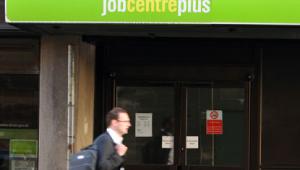Figures from the Office for National Statistics covering the period from April to June showed the number of unemployed people in Scotland rose from 3.2% to 3.6% in the last quarter, with the number out of work rising by 12,000 to 102,000.
However, the picture on youth unemployment was brighter, with joblessness among 16 to 24 year olds at 7.5%, down 2.3 percentage points on a year ago and a reduction of 5.6 percentage points since 2008.
Women fared better than men, with unemployment among the female population unchanged over the last three months compared to an increase of 0.8 percentage points among males.
Overall, the employment rate remained at 75.4%, unchanged on the previous quarter and 0.2 percentage points up on the year.
Business minister Jamie Hepburn said Scotland’s unemployment rate had been lower than the UK’s for 11 months in a row, while the employment level remained close to the highest on record.
“These latest results show that Scotland is seeing the benefits of our Labour Market Strategy – driving inclusive and sustainable economic growth through delivering fair and good quality work across our society,” he said.
“Employment outcomes for women and young people continue to be better in Scotland than in the UK – with Scotland’s employment and unemployment rates for both women and those aged 16-24 outperforming the UK’s.”
Economists at the Fraser of Allander Institute warned against reading too much into the surge in unemployment, pointing out that Scotland’s joblessness rate remains lower than the 3.9% recorded across the UK as a whole.
“At the same time, the employment rate in Scotland is unchanged on the previous three months and remains higher than it was a year ago,” it added.
“That said, monthly changes can be volatile, and it will be important to see if this movement is a temporary blip or the beginning of a more sustained change.”
It also warned that headline labour market numbers were not currently being reflected in substantial improvements in real take-home wage growth.
“With inflation running at just under 2% – and likely to rise in the months ahead as a result of the fall in sterling – many households will be beginning to feel the squeeze,” it said.
Separate figures from the Scotland’s chief statistician showed that labour productivity increased in real terms by 1.1% in the first three months of 2019 compared to the same quarter last year, and by 0.4% on the previous quarter.











